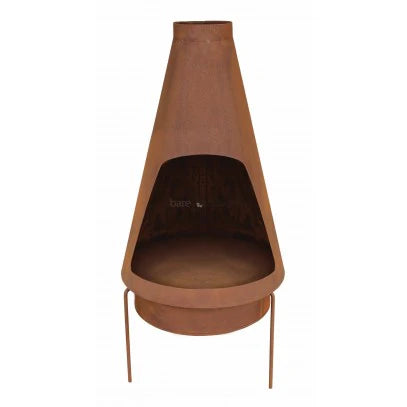
Clay Chimineas vs Cast Iron Chimineas - A Buyers Guide
A chiminea can make a wonderful addition in any outdoor entertaining area. They can throw out a large amount of heat and are very efiicient heaters, allowing you to make use of your outdoor area through multiple seasons, all the while providing an ornamental talking point. But the main question everyone wants to know is what's better clay or cast iron chimineas?
Clay Chimineas
The next step is to make sure that you choose the right type. Traditionally chimineas were made from clay and that is still a great option. Clay chimineas don't require any assembly and are generally full of character and features as no two are the same. Unfortunately it isn't all good news however - clay chimineas are more fragile than their cast iron cousins. They can be cracked if not handled gently and require regular maintenance to help protect them from an early demise.
| Pros | Cons |
| Do not get as hot and are safer | Will often crack or break if not looked after |
| Each chiminea is unique | Won't last as long as a cast iron chiminea |
| Beautiful designs | Require a curing process when first bought |

Cast Iron
Because of the perceived fragility of clay chimineas, cast iron options began appearing on the market and are now increasingly common. There is no doubt that the cast iron products are tougher, have a longer life span and in many cases look just as good as the cast iron choices. There are some things to be aware of however - first is that the cast iron can get considerably hotter than clay, which can cause safety concerns. Secondly, the cast iron will, no matter how well you care for your product, eventually rust.
That rust can damage your outdoor area if the chiminea isn't properly located. Finally, some people find the assembly required for cast iron to be rather time consuming.
| Pros | Cons |
| Much more durable than clay | Reach hotter temperatures and are more dangerous if touched |
| Longer life span | required assembly |
| Often cheaper shipping | Are guaranteed to rust (although it looks great) |

Once you have weighed up the pros and cons of the types of chiminea, it is then important to make sure that it is properly set up. Prepare your chiminea, which for cast iron means assembly and installing an appropriate grill. For clay that preparation involves ensuring that your chiminea is thoroughly sealed.
Many will arrive already sealed but it pays to check. Putting chiminea rocks in place is also important to make sure that the ash is kept off the clay once it is in use. For either kind of chiminea you should also make sure you have a proper set of fireplace tools and covers to help protect them - water is the enemy of clay and cast iron in this instance.
All ready to get the fire going? Make sure your chiminea is located in a spot where it has a stable footing and any escaping ash and sparks are unlikely to catch on anything flammable. Start with a small fire, use high quality wood and gradually build the fire to the desired level. Got more questions? Contact the great staff at Bare Outdoors today - we would be happy to help!
